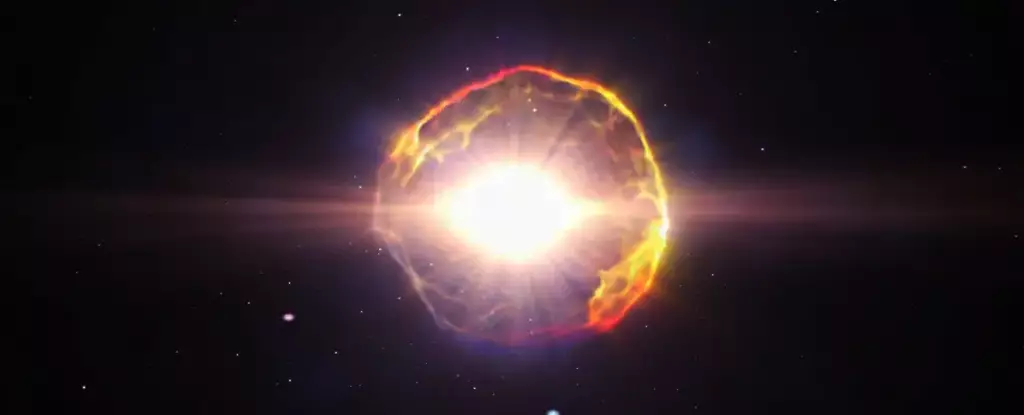Prepare yourselves for a once-in-a-lifetime event that is set to light up the skies this year. A star located 3,000 light-years away is gearing up for a massive explosion known as a nova, which promises to be a sight to behold. NASA has deemed this event to be so extraordinary that it will be visible to the naked eye and expected to last for up to a week.
This cosmic spectacle is all thanks to a white dwarf star orbiting around a giant red star. As the red giant attracts and tears apart neighboring stars, the white dwarf absorbs the hydrogen-rich materials that come its way. The increasing temperature of the white dwarf eventually leads to a cataclysmic explosion known as a nova. Astrophysicists liken these novae to hydrogen bombs, it’s a massive burst of energy released into the universe.
The star at the center of this impending explosion, T Coronae Borealis, has been observed by astronomers since the late 1800s. It bursts about every 80 years, with the last sighting being in 1946. This year’s show will be the final opportunity to witness this spectacular event before the early 2100s. While the explosion would have taken place thousands of years ago, it has taken this long for the light to travel the distance and reach us on Earth.
For those eager to witness this cosmic spectacle, it’s essential to stay updated with NASA’s announcements regarding the timing of the nova. Signing up for the @NASAUniverse channel on X will ensure that you receive all the relevant information. To locate the nova in the sky, look out for the Vega and Acturus stars, and then find the Hercules constellation. Within that constellation, an arc of four visible stars called the Corona Borealis will lead you to the burst of the nova.
Optimizing Your Viewing Experience
To make the most of this extraordinary event, plan your stargazing expedition on a cloudless and Moon-less night, away from city lights. Finding a quiet field in the countryside will provide the ideal setting for observing the cosmic show in the sky. Venture out in the hours just before sunrise for the best viewing experience, and consider using a star map app on your phone to identify the constellation where the nova will burst. Remember to give your eyes at least 30 minutes to adjust to the darkness and fully appreciate the stars.
Additional Heavenly Delights
While preparing for the nova explosion, keep an eye out for other celestial events happening this year. NASA predicts a total solar eclipse in April that will sweep across Canada and the US. Additionally, the green comet 12P/Pons-Brooks is becoming increasingly visible from Earth and is expected to be bright enough to see with the naked eye soon. Combining these events with the viewing of the nova will undoubtedly create a memorable and awe-inspiring stargazing experience.



Leave a Reply